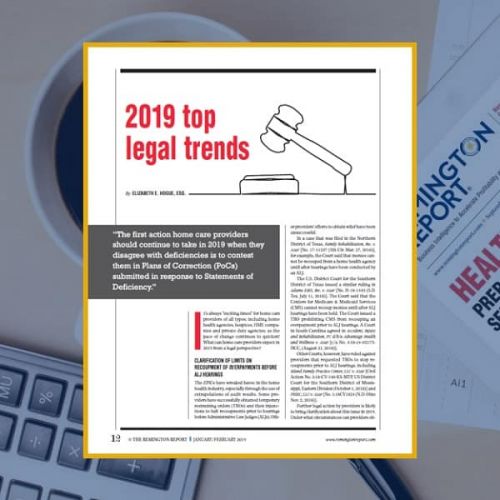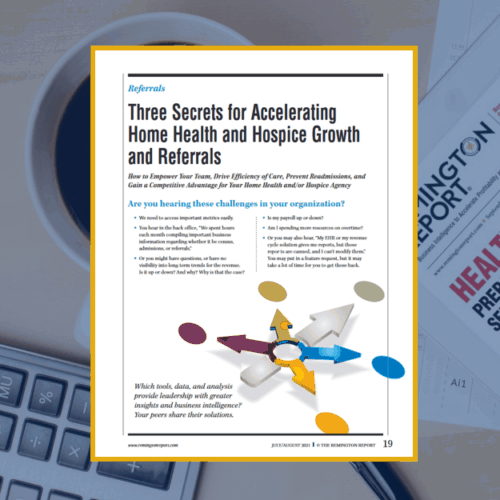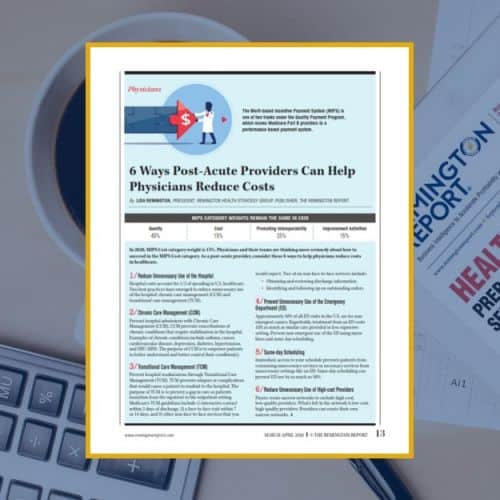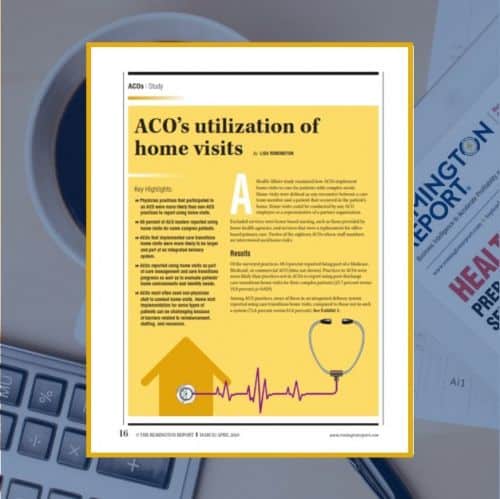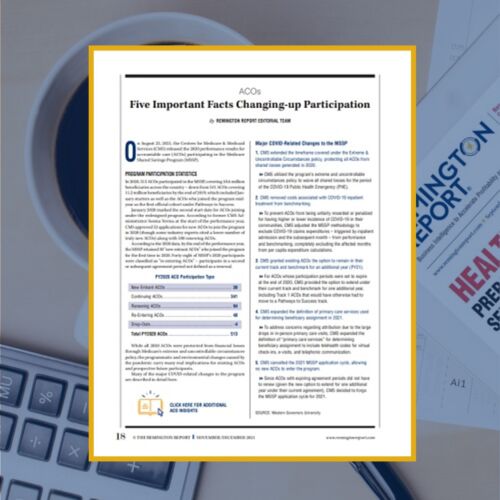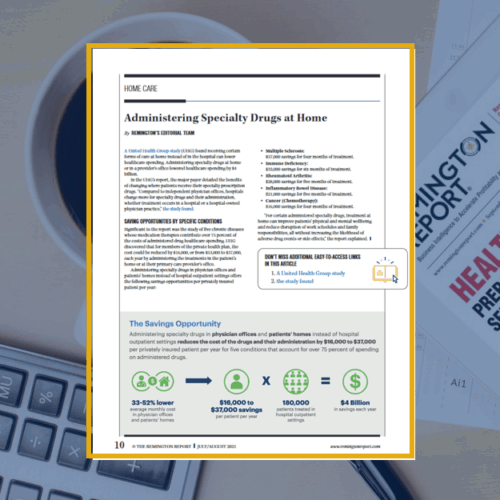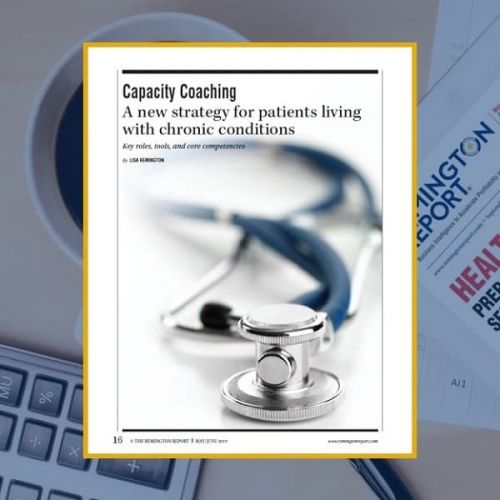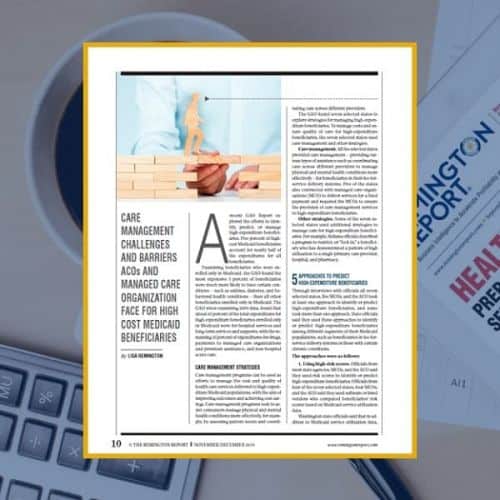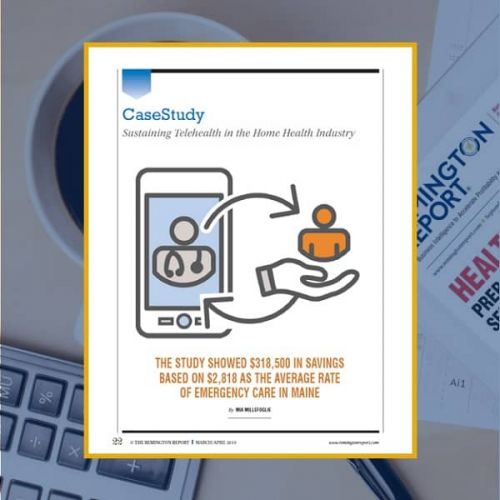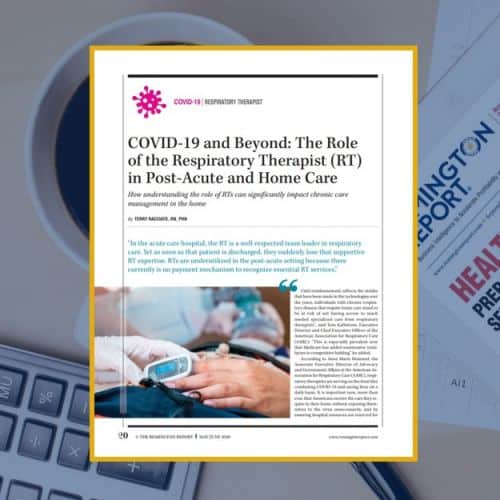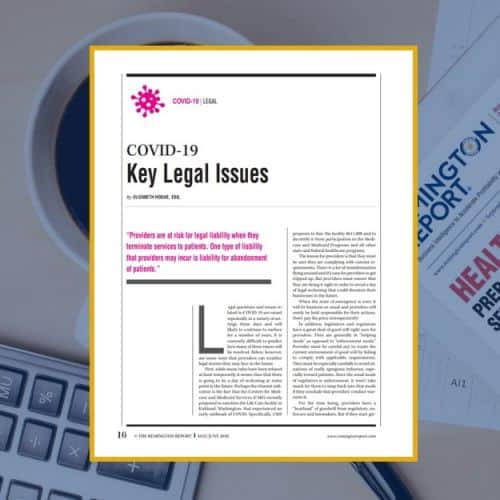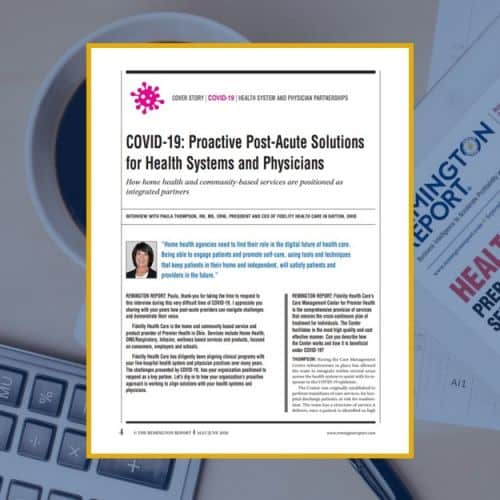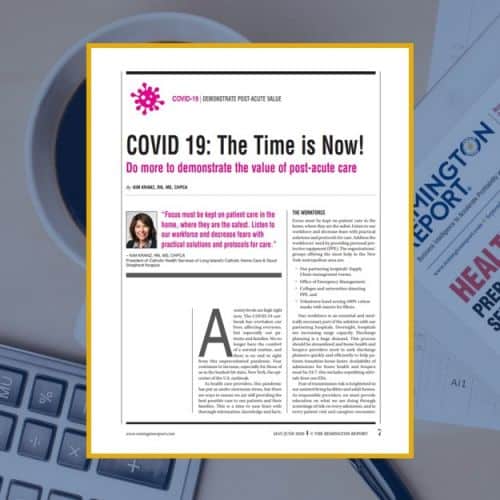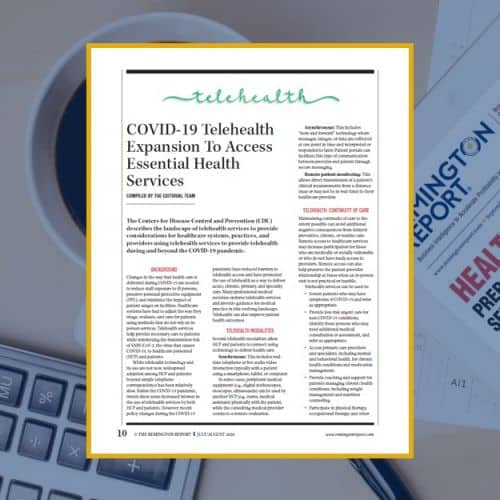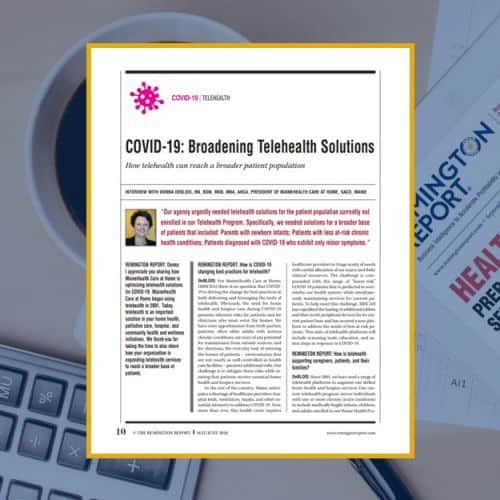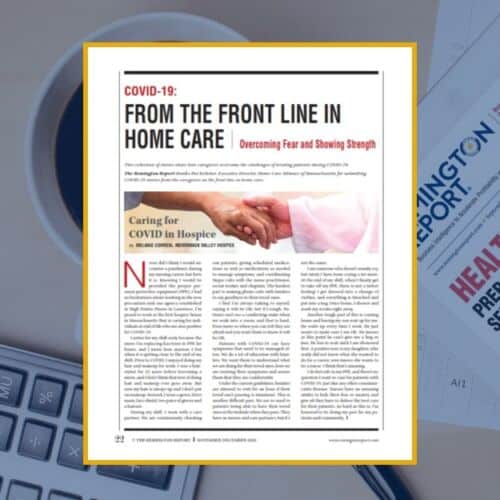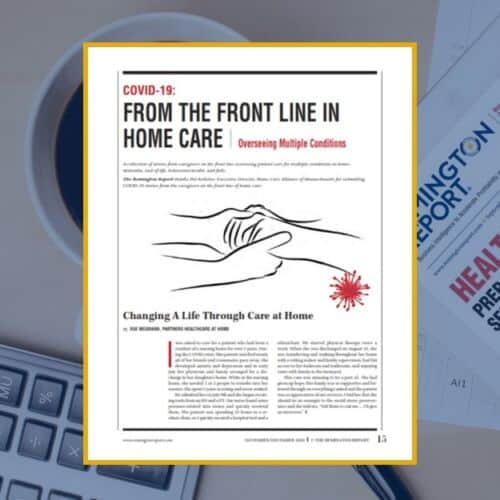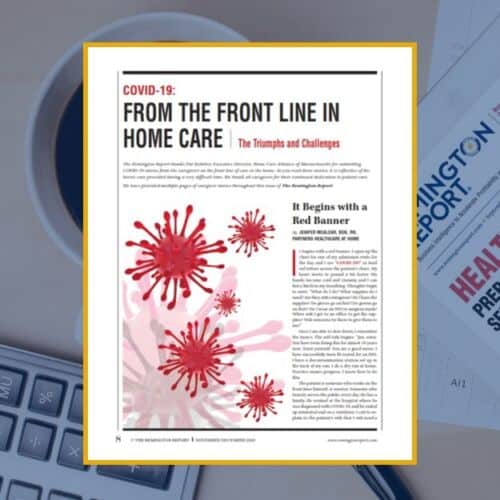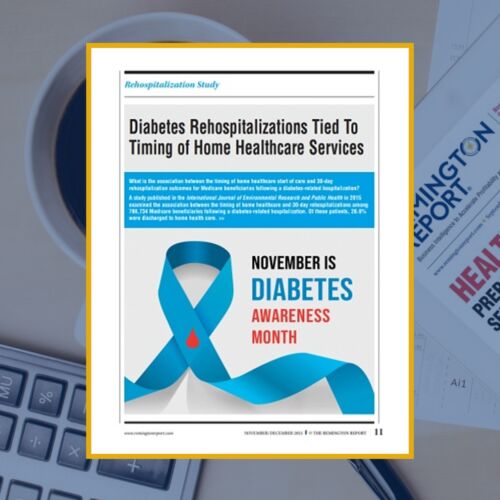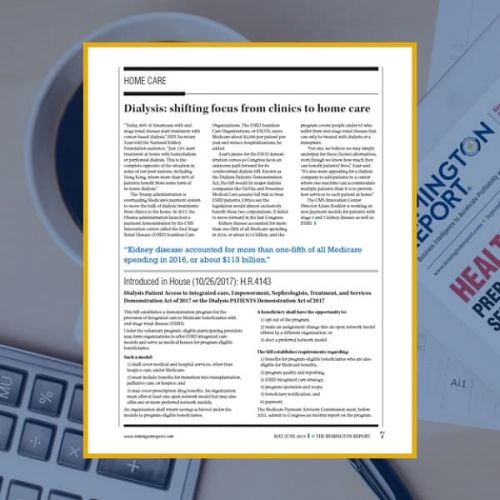-
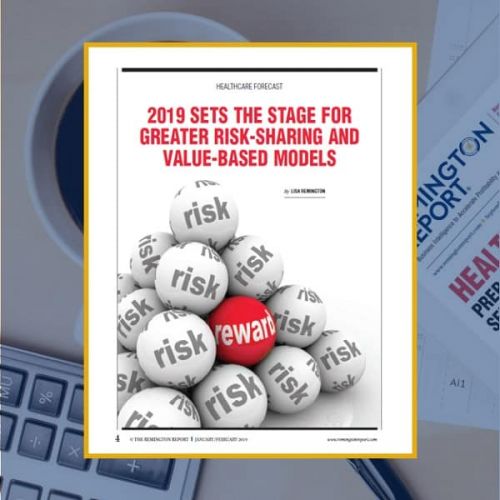 The race to value-based care is heating-up. In today?s healthcare landscape, value-based care is a hodge-podge of models. However, as we track changes to the healthcare infrastructure and payment reform, we see the escalation from fee-for-service models to value-based models supported by an increase in greater risk-sharing models. This article is free to 1-Year Classic and 2-Year Premium subscribers.
The race to value-based care is heating-up. In today?s healthcare landscape, value-based care is a hodge-podge of models. However, as we track changes to the healthcare infrastructure and payment reform, we see the escalation from fee-for-service models to value-based models supported by an increase in greater risk-sharing models. This article is free to 1-Year Classic and 2-Year Premium subscribers. -
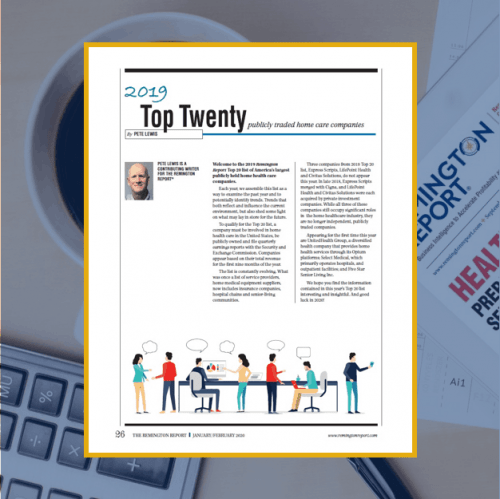 Each year, we assemble this list as a way to examine the past year and to potentially identify trends. Trends that both reflect and influence the current environment, but also shed some light on what may lay in store for the future. This article is free to 1-Year Classic and 2-Year Premium subscribers.
Each year, we assemble this list as a way to examine the past year and to potentially identify trends. Trends that both reflect and influence the current environment, but also shed some light on what may lay in store for the future. This article is free to 1-Year Classic and 2-Year Premium subscribers. -
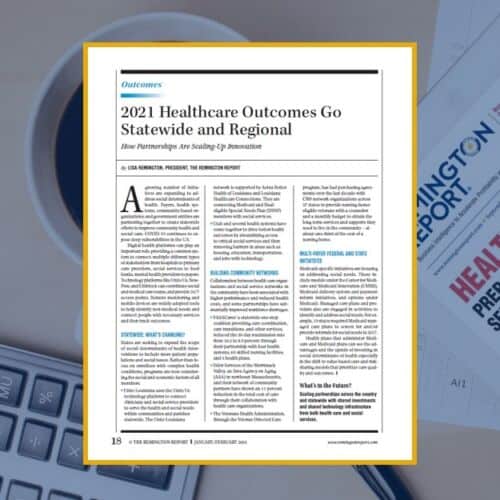 A growing number of initiatives are expanding to address social determinants of health. Payers, health systems, community-based organizations, and government entities are partnering together to create statewide efforts to improve community health and social care. This article is free to 1-Year Classic and 2-Year Premium subscribers.
A growing number of initiatives are expanding to address social determinants of health. Payers, health systems, community-based organizations, and government entities are partnering together to create statewide efforts to improve community health and social care. This article is free to 1-Year Classic and 2-Year Premium subscribers. -
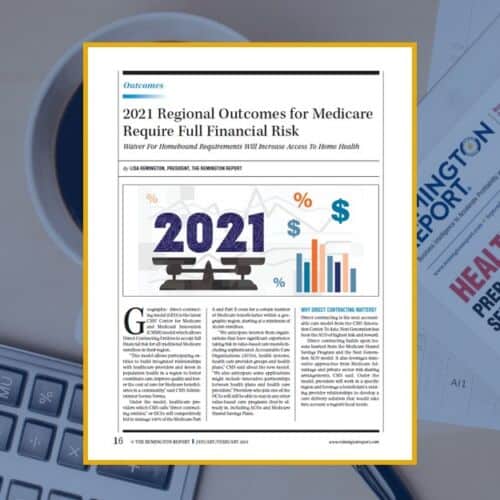 Geographic direct-contracting model (GEO) is the latest CMS Center for Medicare and Medicaid Innovation (CMMI) model which allows Direct Contracting Entities to accept full financial risk for all traditional Medicare enrollees in their region. Three options enhance Medicare benefits and provide waivers for care in the home. This article is free to 1-Year Classic and 2-Year Premium subscribers.
Geographic direct-contracting model (GEO) is the latest CMS Center for Medicare and Medicaid Innovation (CMMI) model which allows Direct Contracting Entities to accept full financial risk for all traditional Medicare enrollees in their region. Three options enhance Medicare benefits and provide waivers for care in the home. This article is free to 1-Year Classic and 2-Year Premium subscribers. -
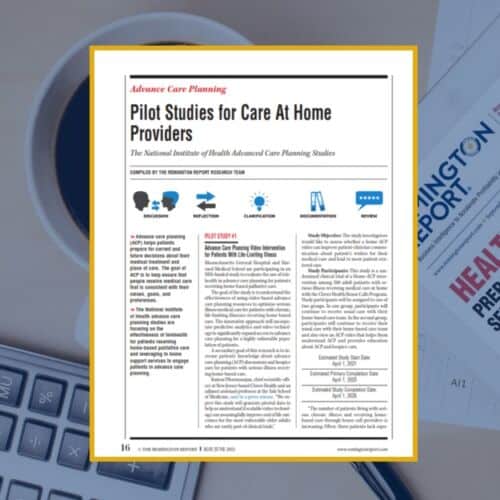 The National Institute of Health advance care planning studies are focusing on the effectiveness of telehealth for patients receiving home-based palliative care and leveraging in home support services to engage patients in advance care planning. Learn more about the pilot studies supporting this research. This article is free to 1-Year Classic and 2-Year Premium subscribers.
The National Institute of Health advance care planning studies are focusing on the effectiveness of telehealth for patients receiving home-based palliative care and leveraging in home support services to engage patients in advance care planning. Learn more about the pilot studies supporting this research. This article is free to 1-Year Classic and 2-Year Premium subscribers. -
 The first two years of the Comprehensive Care for Joint Replacement (CJR) saved Medicare more than?$1,00 per episode. CJR, a five-year Medicare program rolled out in 2016, pays participating?hospitals for hip and knee replacements by episode of care: from admission to 90 days post discharge. This article is free to 1-Year Classic and 2-Year Premium subscribers.
The first two years of the Comprehensive Care for Joint Replacement (CJR) saved Medicare more than?$1,00 per episode. CJR, a five-year Medicare program rolled out in 2016, pays participating?hospitals for hip and knee replacements by episode of care: from admission to 90 days post discharge. This article is free to 1-Year Classic and 2-Year Premium subscribers. -
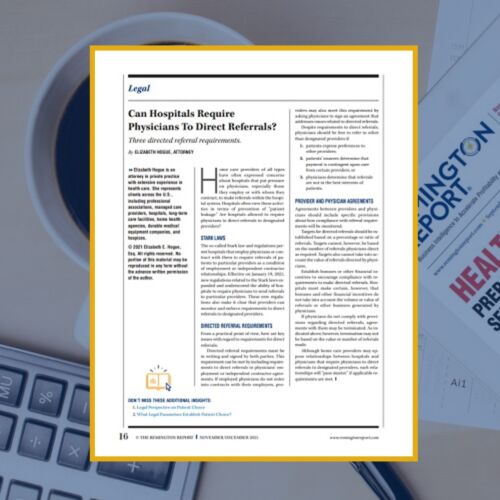 Effective on January 19, 2021, new regulations related to the Stark laws expanded and underscored the ability of hospitals to require physicians to send referrals to particular providers. These new regulations also make it clear that providers can monitor and enforce requirements to direct referrals to designated providers. This article is free to 1-Year Classic and 2-Year Premium subscribers.
Effective on January 19, 2021, new regulations related to the Stark laws expanded and underscored the ability of hospitals to require physicians to send referrals to particular providers. These new regulations also make it clear that providers can monitor and enforce requirements to direct referrals to designated providers. This article is free to 1-Year Classic and 2-Year Premium subscribers. -
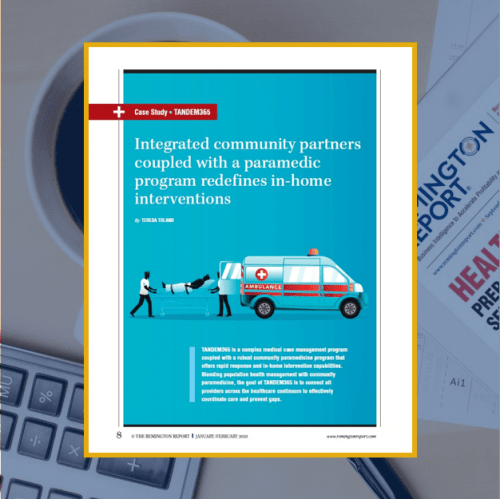 TANDEM365 is a complex medical case management program coupled with a robust community paramedicine program that offers rapid response and in-home intervention capabilities. Blending population health management with community paramedicine, the goal of TANDEM365 is to connect all providers across the healthcare continuum to effectively coordinate care and prevent gaps. This article is free to 1-Year Classic and 2-Year Premium subscribers.
TANDEM365 is a complex medical case management program coupled with a robust community paramedicine program that offers rapid response and in-home intervention capabilities. Blending population health management with community paramedicine, the goal of TANDEM365 is to connect all providers across the healthcare continuum to effectively coordinate care and prevent gaps. This article is free to 1-Year Classic and 2-Year Premium subscribers. -
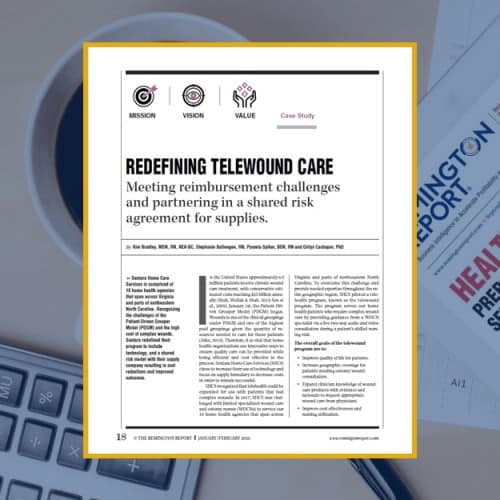 Sentara Home Care Services is comprised of 10 home health agencies that span across Virginia and parts of northeastern North Carolina. Recognizing the challenges of the Patient-Driven Grouper Model (PDGM) and the high cost of complex wounds, Sentara redefined its program to include technology, and a shared risk model with their supply company resulting in cost reductions and improved outcomes. This article is free to 1-Year Classic and 2-Year Premium subscribers.
Sentara Home Care Services is comprised of 10 home health agencies that span across Virginia and parts of northeastern North Carolina. Recognizing the challenges of the Patient-Driven Grouper Model (PDGM) and the high cost of complex wounds, Sentara redefined its program to include technology, and a shared risk model with their supply company resulting in cost reductions and improved outcomes. This article is free to 1-Year Classic and 2-Year Premium subscribers. -
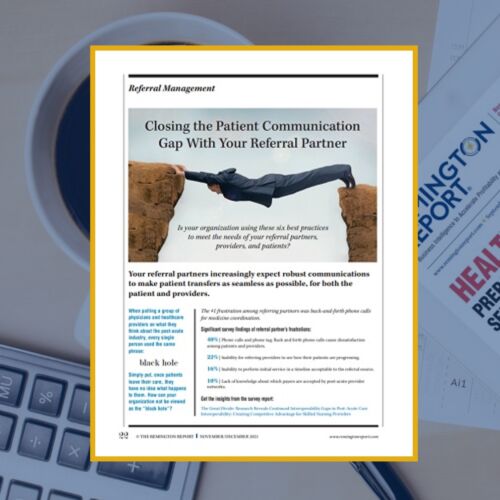 Across the board, we see from referral sources and other care providers alike that they really feel as if they’re part of the care team now instead of the end of the line where a patient goes when they get out of the hospital. Your peers share their thoughts and solutions. This article is free to 1-Year Classic and 2-Year Premium subscribers.
Across the board, we see from referral sources and other care providers alike that they really feel as if they’re part of the care team now instead of the end of the line where a patient goes when they get out of the hospital. Your peers share their thoughts and solutions. This article is free to 1-Year Classic and 2-Year Premium subscribers. -
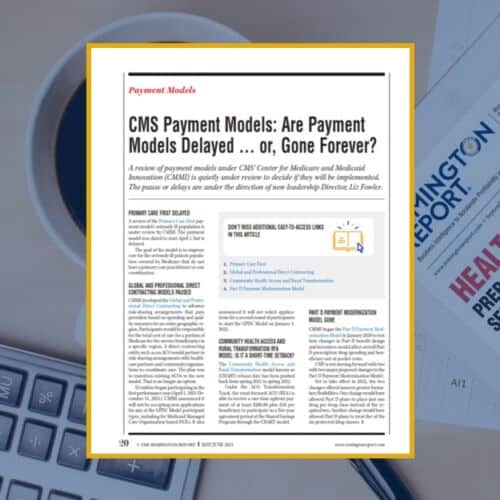 A review of payment models under CMS’ Center for Medicare and Medicaid Innovation (CMMI) is quietly under review to decide if they will be implemented. Many of these models were popular with care at home providers. We provide insight into each of these payment models. This article is free to 1-Year Classic and 2-Year Premium subscribers.
A review of payment models under CMS’ Center for Medicare and Medicaid Innovation (CMMI) is quietly under review to decide if they will be implemented. Many of these models were popular with care at home providers. We provide insight into each of these payment models. This article is free to 1-Year Classic and 2-Year Premium subscribers. -
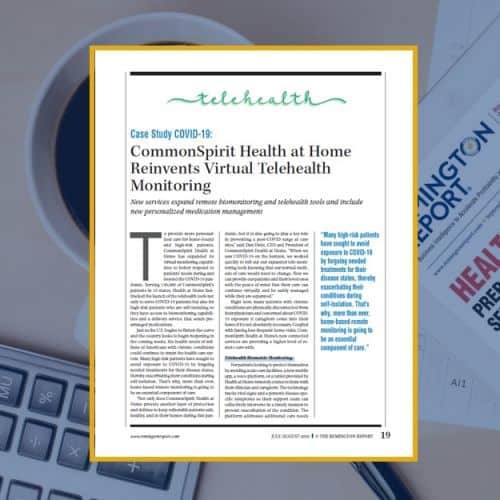 CommonSpirit Health at Home provides another layer of protection and defense to keep vulnerable patients safe, healthy, and in their homes during this pandemic. And, it positioned to play a key role in preventing a post-COVID surge at care sites. Learn how CommonSpirit at Home expanded its virtual monitoring capabilities to better respond to patients? needs during and beyond the COVID-19 pandemic. This article is free to 1-Year Classic and 2-Year Premium subscribers.
CommonSpirit Health at Home provides another layer of protection and defense to keep vulnerable patients safe, healthy, and in their homes during this pandemic. And, it positioned to play a key role in preventing a post-COVID surge at care sites. Learn how CommonSpirit at Home expanded its virtual monitoring capabilities to better respond to patients? needs during and beyond the COVID-19 pandemic. This article is free to 1-Year Classic and 2-Year Premium subscribers. -
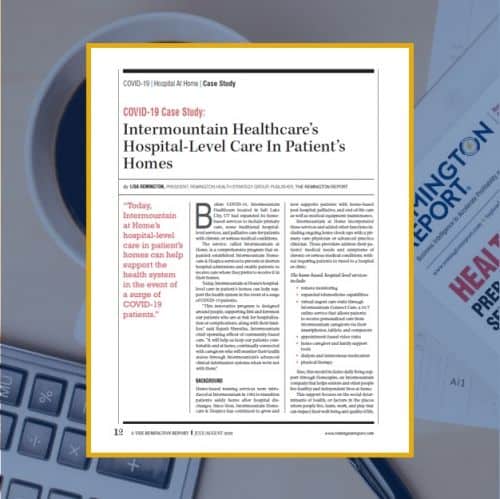 Intermountain at Home’s hospital-level care in patient’s homes supports their health system in the event of a surge of COVID-19 patients. Their models include home-based post-hospital care, palliative, and end-of-life care as well as medical equipment maintenance. This article is free to 1-Year Classic and 2-Year Premium subscribers.
Intermountain at Home’s hospital-level care in patient’s homes supports their health system in the event of a surge of COVID-19 patients. Their models include home-based post-hospital care, palliative, and end-of-life care as well as medical equipment maintenance. This article is free to 1-Year Classic and 2-Year Premium subscribers. -
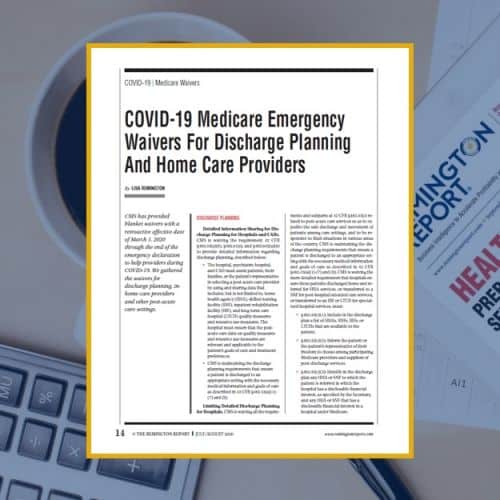 CMS has provided blanket waivers with a retroactive effective date of March 1, 2020 through the end of the emergency declaration to help providers during COVID-19. We gathered the waivers for discharge planning, in-home care providers, and other post-acute care settings. This article is free to 1-Year Classic and 2-Year Premium subscribers.
CMS has provided blanket waivers with a retroactive effective date of March 1, 2020 through the end of the emergency declaration to help providers during COVID-19. We gathered the waivers for discharge planning, in-home care providers, and other post-acute care settings. This article is free to 1-Year Classic and 2-Year Premium subscribers. -
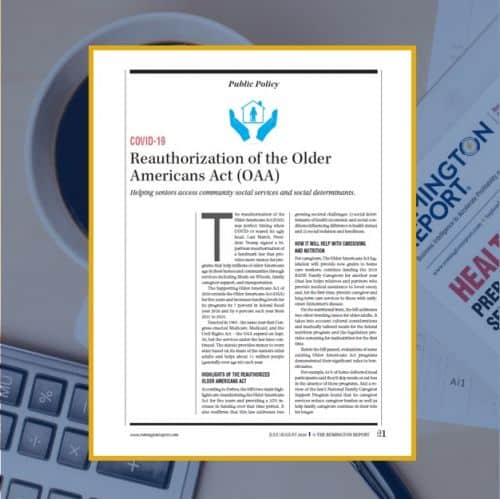 The reauthorization of the Older Americans Act (OAA) was perfect timing when COVID-19 reared its ugly head. Last March, President Trump signed a bipartisan reauthorization of a landmark law that provides more money for programs that help millions of older Americans age in their homes and communities through services including Meals on Wheels, family caregiver support, and transportation. This article is free to 1-Year Classic and 2-Year Premium subscribers.
The reauthorization of the Older Americans Act (OAA) was perfect timing when COVID-19 reared its ugly head. Last March, President Trump signed a bipartisan reauthorization of a landmark law that provides more money for programs that help millions of older Americans age in their homes and communities through services including Meals on Wheels, family caregiver support, and transportation. This article is free to 1-Year Classic and 2-Year Premium subscribers.

